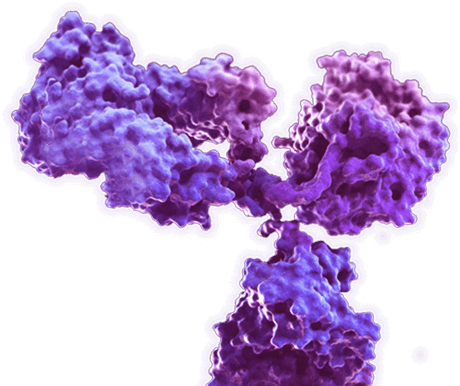Mouse Anti-XYLT Antibody (CBMOAB-46239FYC)
Cat: CBMOAB-46239FYC
Certificate of Analysis Lookup
To download a Certificate of Analysis, please enter a lot number in the search box below. Note: Certificate of Analysis not available for kit components.
Lot Number
To download a Certificate of Analysis, please enter a lot number in the search box below. Note: Certificate of Analysis not available for kit components.
Lot Number
- Product List
- Specifications
- Application Information
- Target
Specifications
| Host species | Mouse (Mus musculus) |
| Species Reactivity | A. thaliana (Arabidopsis thaliana), Maize (Zea mays) |
| Clone | MO46239FC |
| Specificity | This antibody binds to Arabidopsis XYLT. |
| Format | Liquid or Lyophilized |
| Storage | Store at 4°C: short-term (1-2weeks) Store at -20°C: long-term and future use |
| Purity | > 90% was determined by SDS-PAGE |
| Purification | Purified with Protein A or G affinity chromatography |
| Cellular Localization | Golgi apparatus; Other locations |
Application Information
| Application | WB, ELISA |
| Application Notes | ELISA: 1:1000-1:3000 Other applications are to be developed. The optimal dilution should be determined by the end user. |
Target
| Introduction | Glycosyltransferase involved in the xylosylation of N-glycans (PubMed:10781814, PubMed:12943552, PubMed:15013764, PubMed:15686448). Possesses beta-1,2-xylosyltransferase activity, transferring xylose from UDP-xylose to the core beta-linked mannose of N-glycans (PubMed:10781814, PubMed:12943552, PubMed:15013764, PubMed:15686448). Involved in the biosynthesis of glycoprotein bound N-glycans (PubMed:15686448, PubMed:22024534). Does not require metal ions for its activity (PubMed:15686448). |
| Product Overview | Mouse Anti-Arabidopsis XYLT Antibody is a mouse antibody against XYLT. It can be used for XYLT detection in Western Blot, Enzyme-Linked Immunosorbent Assay. |
| Alternative Names | Beta-(1,2)-xylosyltransferase; EC 2.4.2.38; XYLT; At5g55500 |
| UniProt ID | Q9LDH0 |
| Protein Refseq | The length of the protein is 534 amino acids long. The sequence is show below: MSKRNPKILKIFLYMLLLNSLFLIIYFVFHSSSFSPEQSQPPHIYHVSVNNQSAIQKPWPILPSYLPWTPPQRNLPTGSCEGYFGNGFTKRVDFLKPRIGGGGEGSWFRCFYSETLQSSICEGRNLRMVPDRIVMSRGGEKLEEVMGRKEEEELPAFRQGAFEVAEEVSSRLGFKRHRRFGGGEGGSAVSRRLVNDEMLNEYMQEGGIDRHTMRDLVASIRAVDTNDFVCEEWVEEPTLLVTRFEYANLFHTVTDWYSAYVSSRVTGLPNRPHVVFVDGHCTTQLEETWTALFSGIRYAKNFTKPVCFRHAILSPLGYETALFKGLSGEIDCKGDSAHNLWQNPDDKRTARISEFGEMIRAAFGLPVNRHRSLEKPLSSSSSSASVYNVLFVRREDYLAHPRHGGKVQSRLINEEEVFDSLHHWVATGSTGLTKCGINLVNGLLAHMSMKDQVRAIQDASVIIGAHGAGLTHIVSATPNTTIFEIISVEFQRPHFELIAKWKGLEYHAMHLANSRAEPTAVIEKLTEIMKSLGC. |
For Research Use Only | Not For Clinical Use.
Online Inquiry

